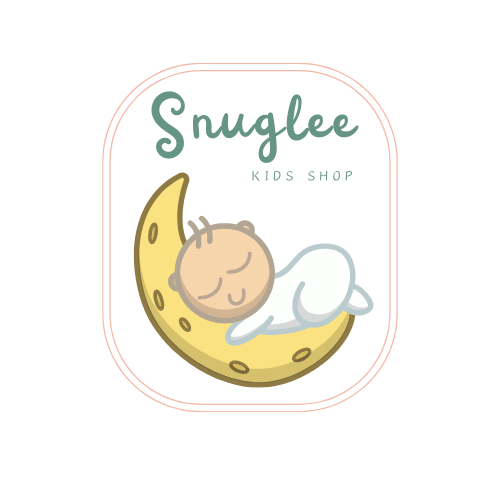
What Is Montessori? A Path to Independent, Confident Kids
Discover Montessori: The Philosophy That Inspires Confidence and Independence in Children
If you’ve ever searched for ideas to help your child become more confident, independent, and curious, you’ve probably come across the term “Montessori.” But what exactly is the Montessori method, where does it come from, and how can it influence the way we design our homes and choose our children’s furniture?
At Snuglee, we believe that great design can nurture great development and the Montessori philosophy is a beautiful example of that. Let’s explore how this approach has shaped the way modern parents think about learning, play, and bedtime.
The Origins of the Montessori Method
The Montessori method was developed by Dr. Maria Montessori, an Italian physician and educator, in the early 1900s. When she opened her first school, Casa dei Bambini (“Children’s House”), she observed that children learn best when they are free to explore and make choices independently.
Instead of relying on rigid instruction, Dr. Montessori designed an environment where children could move, touch, and learn at their own pace. This revolutionary idea that learning happens naturally when children are trusted to explore, spread across the world and changed early education forever.

The Core Principles of Montessori
At its heart, Montessori is about respecting a child’s natural curiosity and giving them the tools to grow with confidence. Some of its main principles include:
-
Independence – Encouraging children to do things on their own, from dressing to tidying up.
-
Freedom within limits – Allowing children to make choices in a safe, structured environment.
-
Hands-on learning – Using real, tactile materials to help children understand new concepts.
-
Respect for the child – Valuing each child’s pace and individuality.
-
A prepared environment – Creating calm, organized spaces that invite discovery and learning.
How Montessori Philosophy Shapes the Home
The Montessori approach isn’t limited to schools. It’s just as powerful when applied at home. By designing spaces that are accessible, safe, and inviting, parents can help children develop independence from an early age.
Here are a few everyday items that bring the Montessori philosophy to life:
Montessori-Inspired Beds

A Montessori floor bed sits close to the ground, allowing young children to get in and out safely on their own. This simple design encourages confidence and autonomy essential building blocks for independence.
Our Montessori beds are crafted from solid pine wood, ensuring both durability and safety. With styles like our floor beds and low rise beds with 20cm legs, children can enjoy a cozy sleeping space that also supports their freedom to move and play.
Every Snuglee bed is eco-friendly, UK-stocked, and shipped quickly via FedEx, helping parents create a Montessori-style bedroom without the wait.
Child-Sized Furniture
From low tables and chairs to reachable shelves, furniture made to a child’s scale helps them take responsibility for their own space. They can pick out clothes, choose books, or organize toys all without adult help.
Montessori Toys and Learning Tools

Montessori toys are simple, natural, and purposeful. They often focus on one skill at a time, encouraging concentration and problem-solving. Think wooden stacking blocks, sorting trays, and puzzles that engage the senses rather than flash with lights or sounds.
Practical Life Tools
Montessori families often provide small, child-sized utensils, dishes, or cleaning tools so children can take part in everyday activities. Setting the table, sweeping, or helping prepare meals become meaningful learning moments.
Organized Spaces
A key part of the Montessori home is clarity and order. Open shelves, baskets, and accessible storage help children learn how to take care of their belongings and tidy up after play.
Why Parents Love Montessori
Parents around the world appreciate Montessori because it nurtures real-world skills independence, focus, confidence, and respect. It’s a philosophy that believes children are naturally capable and simply need the right environment to thrive.
Whether it’s choosing a Montessori bed that encourages self-reliance or arranging toys at a child’s height, every decision contributes to raising capable, curious, and confident little ones.
Bringing Montessori Home with Snuglee
At Snuglee, we’re proud to create furniture that supports this thoughtful approach to childhood. Our beautifully crafted kids beds are designed not only to look great but also to empower children in their daily routines.
Each piece is made from solid pine wood, ensuring strength and safety, while our Montessori-inspired designs promote freedom, comfort, and independence, perfectly in tune with Dr. Montessori’s vision.
Explore our collection at snuglee.co.uk and discover how a simple design choice can make a big difference in your child’s growth.
FAQs
What is the Montessori method?
The Montessori method, created by Dr Maria Montessori in the early 1900s, encourages independent learning through hands-on exploration in a calm, structured setting.
Why do parents choose Montessori?
It helps children grow in confidence, independence, and curiosity. Montessori encourages kids to make choices, solve problems, and take responsibility from an early age.
What are Montessori-inspired products?
These are items designed to support independence such as floor beds, low tables, child-sized furniture, and wooden toys. Explore Snuglee Montessori-beds, crafted from solid pine wood for safety, comfort, and freedom of movement.
What is a Montessori bed?
A Montessori bed (or floor bed) sits low to the ground so children can get in and out safely on their own. It encourages independence and builds confidence.
When can a child use a Montessori bed?
Most parents switch from a cot to a Montessori bed between 18 months and 5 years, depending on the child’s readiness to move freely.
Share



